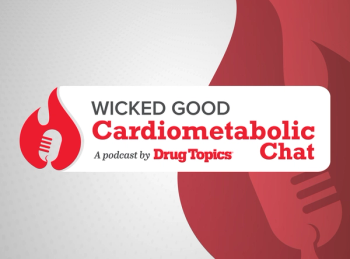
- Drug Topics January 2022
- Volume 166
- Issue 01
Managing T1D in Adults: How Can Pharmacists Help?
Type 1 diabetes requires patients to have knowledge and skill to manage medication and potential complications.
Type 1 diabetes (T1D) is caused when the immune system destroys the insulin-producing β cells of the pancreas. T1D accounts for up to 10% of all cases of diabetes. Because new-onset T1D can occur in any age group and people with the disease live for decades after diagnosis, the overall prevalence of T1D is higher in adults than children. In November 2021, the American Diabetes Association (ADA) and the European Association for the Study of Diabetes (EASD) published a joint consensus report in the journal Diabetes Care.1
The report authors addressed a wide range of topics, from initial diagnosis and management goals to psychosocial care, adjunctive therapies, and future perspectives. According to Stephanie Ostling Mason, PharmD, CDCES, a diabetes clinical pharmacist at Glytec, continued medical, educational, and psychosocial support is key for patients with T1D.
“The management of T1D requires the individual to have a significant level of knowledge and skill to manage complex medication regimens, adopt behavioral changes, and navigate hypoglycemia and hyperglycemia,” she said.
Diagnosis
According to the consensus report, “the clinical presentation may differ, but the classical triad of thirst and polydipsia, polyuria, and weight loss are common symptoms of T1D.” However, Mason noted that the clinical onset and presentation of T1D can vary widely, and a thorough assessment and workup of the patient are needed to make an accurate diagnosis. “Accurate (and timely) diagnosis of T1D is critical and informs decisions regarding insulin therapy, adjunctive therapies, technology, education, and other disease screenings,” she said.
“The key elements of an e.ective management approach include Diabetes Self-Management Education and Support, BG monitoring, insulin therapy, and the management and prevention of hyperglycemia and hypoglycemia,” Mason added.
Monitoring
For most adults with T1D, the preprandial BG target is 80 to 130 mg/ dL, whereas the postprandial target is less than 180 mg/dL (or < 140 mg/dL in some patients). The hemoglobin A1Ctarget for most adults is less than 7%.
Hemoglobin A1C it does not take into account variability in levels and hypoglycemic episodes. “Continuous glucose monitoring, or CGM, is the standard for glucose monitoring for most adult patients with T1D,” Mason explained. The monitors measure interstitial glucose or BG levels. Monitors such as the Dexcom G6 display BG levels every 5 minutes and can alert the patient to high or low levels. Other monitors, like the FreeStyle Libre, require the patient to scan the device for a reading.
However, “blood capillary testing is still recommended [with CGM use] in certain situations such as during a hypoglycemic episode, as there may be a lag of 5 to 15 minutes in interstitial glucose readings,” Mason said.
Insulin
Patients with T1D require basal insulin to maintain steady BG levels while fasting or sleeping. At mealtime, insulin is required for intake of carbohydrates and other macronutrients like fat and protein. At other times, correction insulin can be administered to treat hyperglycemia.
“The treatment approach should be individualized to the patient based on patient preferences, cost, psychosocial support, and the risk of hypoglycemia and weight gain,” Mason said. Insulin can be delivered by multiple daily injections—when the patient injects a basal insulin analog as well as a rapid-acting or ultra-rapid-acting insulin analog for mealtime or correction doses—or through pumps. Pumps use a continuous insulin infusion of a rapid-acting insulin analog, which serves as the basal insulin, combined with mealtime and correction doses.
Hypoglycemia
“Hypoglycemia continues to be the limiting factor in the management of T1D,” Mason noted. Hypoglycemia levels are as follows:
Level 1: BG between 54 and 69 mg/dL
Level 2: BG lower than 54 mg/dL
Level 3: any hypoglycemia level at which the patient has an altered mental or physical state and needs the help of a third party for recovery
The patient’s endocrinologist should provide a treatment plan for hypoglycemia which generally consists of up to 15 grams of fast-acting carbohydrates (such as glucose tablets) or more if required. Capillary measurement with a BG meter is recommended during hypoglycemic episodes in order to prevent overtreatment of hypoglycemia.
Helping Patients With T1D
Mason cautioned pharmacists that there are many challenges unique to each person with T1D and in daily management. “Use best practices as a framework, keeping in mind the patient’s needs and abilities,” she said. Mason also suggested that providers assess patient’s barriers to treatment, including financial, psychosocial, and literacy barriers, in addition to regimen complexity. Pharmacists can help patients by reinforcing treatment goals, including target A1C, preprandial and postprandial BG targets, and time in range. Pharmacists can also ensure every patient with T1D has a prescription for glucagon and understands how to use it—and can train their friends and family in how to use it in case of emergency.
Pharmacists can also offer additional resources to patients with T1D, Mason said. These resources include “recommending a diabetes education class, referral to a registered dietitian, information on an exercise program, and smartphone applications to assist with carbohydrate counting or help with stress reduction (eg, meditation applications).”
Patients with T1D are not homogenous, and by working to understand the unique needs of each patient, pharmacists can emerge as important members of the health care team for patients with T1D.
Articles in this issue
almost 4 years ago
ASHP 2021: News and Updatesalmost 4 years ago
TICOVAC Vaccine to Prevent Tick-Borne Encephalitisalmost 4 years ago
2021 Pharmacy Award Winners, the Best of the Bestalmost 4 years ago
Pharmacists’ Plates Are Piled Highalmost 4 years ago
Update on Childhood Rheumatic Disordersalmost 4 years ago
Pharmacists Central to Distributing Pediatric COVID-19 Vaccinesalmost 4 years ago
Patient Education Is Key to Reducing Adverse Effects of OTC Analgesicsalmost 4 years ago
Rx for VR: The Role of Virtual Reality in the Pharmacyalmost 4 years ago
The Benefits of Co-administering COVID-19, Flu Vaccinesalmost 4 years ago
Five New Year’s Resolutions for Independent Pharmacy OwnersNewsletter
Pharmacy practice is always changing. Stay ahead of the curve with the Drug Topics newsletter and get the latest drug information, industry trends, and patient care tips.





























































































































